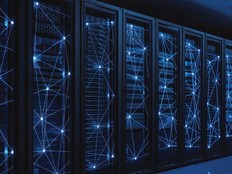Power Shift
William Woods University uses less power in its virtualized data center, but still needs lightning-proof protection from its UPS systems.
University Deploys UPS Systems
A lightning strike at William Woods University last spring reignited interest in power protection for the school's IT resources. The bolt of electricity knocked out the university's uninterruptible power supply systems, says Kurt O'Connor, assistant server administrator for the university, which serves 2,500 students on its Fulton, Mo., campus.
“We knew we needed to replace the UPS units, and that renewed a conversation about where on campus we wanted to house our servers, as well as what we were going to do about power protection and redundancy,” O'Connor says. “We wanted a plan for our main servers for the next five to 10 years.”
As a result of that discussion, the IT group created a primary server room in the basement of a century-old concrete administration building with recently upgraded wiring, he says. Along with the servers, IT staff installed a three-phase 12kVA Eaton BladeUPS Power System. The new wiring made it possible to implement the three-phase UPS, which operates more efficiently than single-phase models, saving power and money, O'Connor says
Continuing to downsize the data center through virtualization also factors into the long-term plan. O'Connor and his colleagues had already consolidated the resources from roughly 20 physical servers onto two high-performance HP ProLiant DL380 G7s as the host hardware. The DL380s run VMware ESXi 4.1. The two servers provide all the services that previously ran on dedicated physical servers with room to grow, he says.
“One of the beauties of virtualization is reduced power consumption – there is a lot of impetus toward going green, not just because it is good for the environment but because it is fiscally responsible as well,” O'Connor says. “That doesn't mean that you don't hedge your bets and make sure you have plenty of protection from your UPS.”
The IT staff also identified a second site on campus in which to back up key applications, O'Connor says. For that location, they installed an 8kVA Tripp Lite Smart Online UPS system, selecting a single-phase option to match the wiring infrastructure of the building.
Because of its reduced power footprint through virtualization, the university hasn't yet deployed many centralized energy monitoring features offered by both the Eaton and Tripp Lite UPS systems, O'Connor says. But at approximately $10,000 each, the UPS units are well worth the investment, he says.
“How do you measure the value of knowing that when the power goes out your servers won't just shut down and you won't lose your data?” he asks. “Uptime for our servers is the ROI.”
Uptime certainly matters at Bryant University in Smithfield, R.I., though a 2007 data center consolidation expanded the IT staff's focus, says Richard Siedzik, director of computer and telecommunications services. Combining three separate facilities into a single data center on IBM BladeCenter JS21 hardware with an APC InfraStruXure system to handle power management, Bryant cut energy consumption by 15 percent, reduced the physical footprint of the equipment by 50 percent, and doubled its IT capabilities, says Siedzik.
“The results come from consolidation, standardization and virtualization, and they've made us better stewards of energy,” Siedzik says. “We used to just manage for availability and reliability, but now we manage for efficiency, too.”
The IBM BladeCenter hardware is designed to work with InfraStruXure and IBM Tivoli software to maximize power management and energy savings, says Siedzik. Bryant University is in the process of creating a system that will use software to extend power monitoring beyond the data center, to help lower energy costs all over the campus, he says.
Schools with less sweeping data center initiatives than Bryant's can still benefit from using the monitoring capabilities of their power management systems, Siedzik says.
32%
Percentage of data center professionals who say their organizations use best practices in data center design and redundancy to maximize availability
Source: Ponemon Institute, “National Survey on Data Center Outages,” October 2010
“Even if you know your energy usage is going down now, by monitoring and measuring your power consumption you will learn things that will save more as your data center evolves,” he says.
Power management is evolving with the data center far beyond the time when organizations simply installed the highest capacity UPS they could afford, says IDC analyst Katherine Broderick. Trends such as consolidation, virtualization and green computing have made power management an increasingly dynamic process.
“Availability is still the most important consideration, but power management has become much more strategic,” she says. “The movement is toward management, monitoring and analysis. Energy costs are a huge part of IT bills.”
For now, William Woods University is satisfied with reduced energy consumption and reliable power protection, but the cost of energy and hardware are continuing concerns, says O'Connor.
“You can't lose your services or data, but you've also got to know that watts wasted turn into dollars wasted,” he says.






